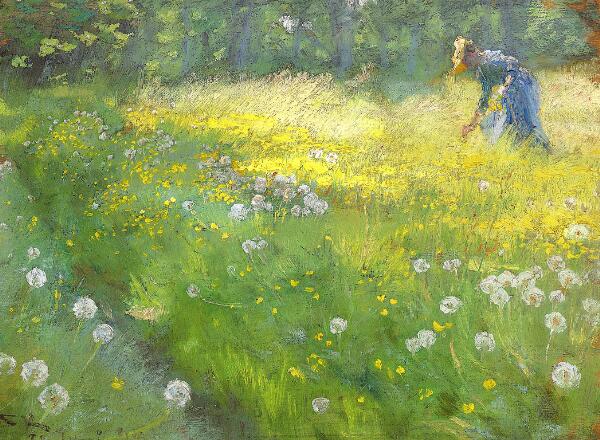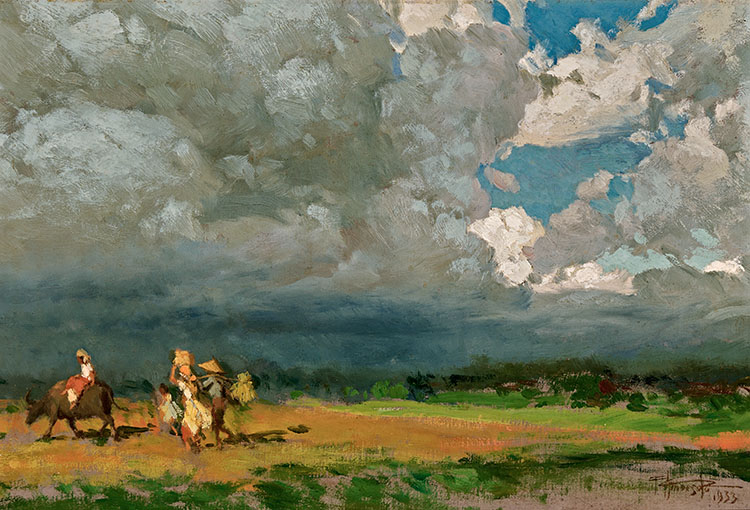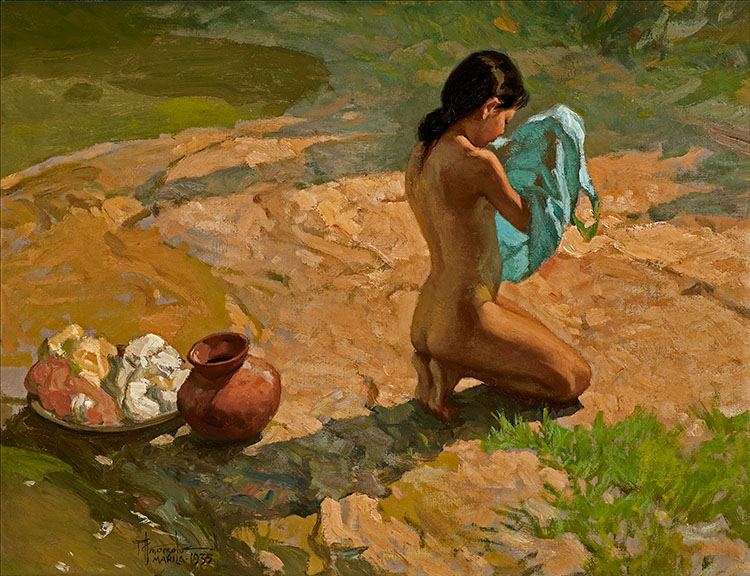Fernando Amorsolo - solens lys
Fernando Amorsolo er en af de mest betydningsfulde malere i filippinsk kunst. Han er særligt kendt for sine stemningsfulde og lysfyldte skildringer af det filippinske landskab, livet på landet, den særegne natur og traditionel filippinsk kultur. Tre farvemættede værker af kunstneren, der har tilhørt plantageejer ”Java-Bach”, kommer på Liveauktion 2 december.
Fernando Amorsolo (1892-1972) opnåede stor national og international anerkendelse i sin samtid. Hans værker, der anses som selve indbegrebet af filippinsk kultur, blev et vigtigt led i processen med at skabe en identitet som selvstændig stat. De tre Amorsolo-værker blev erhvervet i Filippinerne i 1935 af Niels Bach (1885-1973) og er herefter nedarvet i familien. Niels Breinholt Bach var uddannet kemiingeniør og rejste efter endt uddannelse og kort før 1. verdenskrigs udbrud til Java, hvor han fik arbejde på en hollandsk sukkerfabrik. I forlængelse heraf fik han tilnavnet ”Java-Bach”. I 1923 købte Bach en stor sukkerrørsplantage på Filippinerne og grundlagde firmaet ”Bachs Cane Sugar Co A/S 1923”.
”Badende kvinder er et af Amorsolos mest yndede motiver. Han har malet flere af disse idylliske scener, hvor kvinder vasker sig i en flod omgivet af frodig natur. Han indfanger ofte og på mesterlig vis sollysets spil”.
Sofie Normann ChristensenSpecialist i ældre malerier hos Bruun Rasmussen
Solfyldte marker, filippinske skønheder og lækre frugter
Amorsolo var kunstner i en tid, hvor Filippinerne var under store forandringer – bl.a. kom østaten, der tidligere havde været en spansk koloni, under amerikansk herredømme i 1898. Amorsolo søgte mod den livsstil, som han havde stiftet bekendtskab med gennem sin barndom på landet og som endnu ikke var blevet påvirket af amerikansk kultur. Selvom han blev inspireret af den vestlige verdens kunst, var det det filippinske landskab og den traditionelle filippinske kultur, skikke og erhverv, der optog ham. Han malede lyse og solskinsfyldte scener af filippinernes dagligdag på landet – f.eks. bønder i færd med at høste ris, med madlavning, mangoplukning, tøjvask i floderne, til fester og på markeder. Han fokuserede også på filippinske skønhedsidealer og skabte en type – dalagang Filipina – en kvinde med træk, som for ham repræsenterende filippinsk skønhed, og som går igen i mange af hans værker.
|
|
|
|
|
|
En helt særlig glød
Amorsolo er kendt for sin evne til at indfange samspillet mellem lys og skygge. Han hentede bl.a. kunstnerisk inspiration fra flere af de største europæiske kunstnere, som barokmaleren Diego Velázquez (1599-1660), de franske realister og impressionister som Édouard Manet (1832-188) og Claude Monet (1840-1926) og de samtidige spanske kunstnere Ignacio Zuloaga (1870-1945) og Joaquín Sorolla (1863-1923). Især Sorolla og dennes brug af sollys til at skabe dramatiske effekter og kontraster blev en stor inspirationskilde. Amorsolo anvendte lyset til at fremhæve sine figurer og indhylle dem i en særlig glød, og det var især dét, der adskilte ham fra hans samtidige filippinske kunstnerkolleger, og det der regnes for at være et af hans største bidrag til malerkunsten.

For yderligere oplysninger, kontakt venligst
|
|
Julie Arendse VossJulie Arendse VossAfdelingsleder / Ældre kunst / København |
|
|
Sofie Normann ChristensenSofie Normann ChristensenVurderingssagkyndig / Ældre kunst / København |


